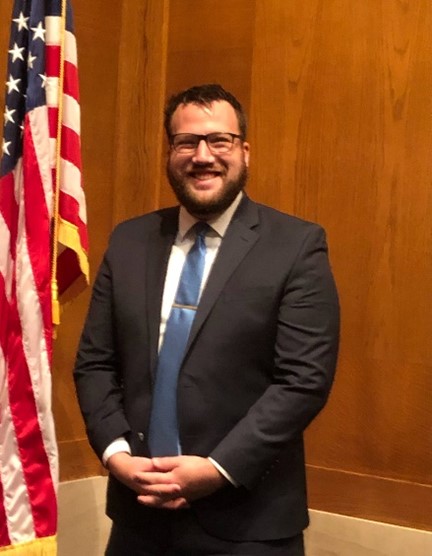Top Tips for Accessing and Navigating Federal Grants
By Nathan Williamson, FACTS Management
For someone who gets lost easily on road trips and relies on a GPS to get wherever I’m going, I know the value of a good navigational tool. Unfortunately, when it comes to understanding financing education, especially federal grants like Title I and the Individuals with Disabilities Education Act (IDEA), it can feel like there is no true north. Where do you go to find information? Whom do you ask? What happens if the answers seem to constantly change?
To help get you pointed in the right direction, we’ve compiled a cheat sheet of the top things you need to know to access education assistance. From breaking down federal grants by program to finding the best partner to help you navigate the process, keep reading for some invaluable advice.
Know the Programs
The best place to get started? Getting familiar with the different federal programs available. They include:
Title I
Most of us have heard of this program - and tend to associate high-need schools and poverty with it. However, almost all schools have Title I eligible children. This is the largest federal program, so your students likely generate some funds. The easiest way to explain this program is “If your student chose to enroll in the public school system, based upon their grade level and address, would the child attend a Title I school?” If yes, then ask “Is the child in poverty?” If yes, then that student generates Title I funds.
 However, once those funds are generated, they are spent on children who live in Title I attendance areas and are in academic need. Once you get to the services part, poverty is no longer a factor.
However, once those funds are generated, they are spent on children who live in Title I attendance areas and are in academic need. Once you get to the services part, poverty is no longer a factor.
Who to ask for help: The local, traditional public schools where the students enrolled in your school live. This might mean you are working with ten, fifteen, or even more schools! There are ways to make this easier but start with the public school system where most of your children live.
Title II
This grant is primarily used for professional development. Anything that improves the teaching and learning in your school is fair game here - conferences, books, subscriptions to PD software, university tuition costs, and more. Tie it to the needs of the teachers in your school and what your data tells you, and you’ll likely get a yes.
Who to ask for help: Everything I said about Title I, forget here. For Title II and the rest of the federal programs listed, you should only work with the traditional public school where the physical building of your nonpublic school is geographically located. This means you have only one entity to work with. Hooray for making life easier!
Title III
Title III is a unique program - very small and specifically for students who are English learners, or those not yet found to be fluent in speaking, listening, reading, and writing in English. There is an assessment that determines this that is unique to each state or district. If you have a diverse student body with multiple languages present, then tap into this money to support the materials, programming, and PD to support English learners.
Who to ask for help: Traditional public school where the nonpublic school is geographically located.
Individuals with Disabilities Education Act (IDEA)
 Children whose parents voluntarily place them in private schools are eligible for services under IDEA if they have a disability. This is usually called an Individual Service Plan (ISP) and accounts for the wide range of disabilities that students may have, including both those easily seen and those not. All children are important, and this funding stream helps level the playing field. If you have a child enrolled who you think might have a disability, but has not been identified, you also can get help.
Children whose parents voluntarily place them in private schools are eligible for services under IDEA if they have a disability. This is usually called an Individual Service Plan (ISP) and accounts for the wide range of disabilities that students may have, including both those easily seen and those not. All children are important, and this funding stream helps level the playing field. If you have a child enrolled who you think might have a disability, but has not been identified, you also can get help.
Who to ask for help: Traditional public school where the nonpublic school is geographically located.
Know the Public Schools
Now that you’ve learned about some of the more common programs, make sure you build a relationship with the key people at the local public schools. If the school district is larger, you likely will need to ask for the Federal Programs Director, Title Director, Chief Academic Officer, or Director of Curriculum and Learning. For special education, often the title of the person is Director of Special Education or Special Populations. In all cases, know that it is an annual expectation that the schools reach out to you, but knowing who they are as well help you advocate for the needs of your teachers and students.
Gather Your Data
For many of the programs, there are data components that you’ll need. For example, Title I needs addresses and poverty data. Types of data include the number of teachers, your professional development needs, and what you would like to purchase. They might ask what you already have and how this will complement the items purchased in prior years with federal funds. All funding and activities have to flow through the public school first but come prepared with your needs and background info. This makes consultation more effective.
Know Your Ombudsman and State Resources
All these federal grants require an Ombudsman. For Title programming and Special Education, the Ombudsman likely is two different people. This person is a third-party, impartial person at the state level that is meant to help this process - private and public schools working together under the federal programs. In the best cases, this person will have some good resources on their website, like consultation requirements and more. It’s definitely worth taking the time to check out.
Join Your Association
Teamwork makes the dream work. Most states have a nonpublic school association, as well as specific organizations depending on the type or focus of your school. Here is a good place to find out more.
Work with Partners
Lastly – and most importantly – it’s always helpful to find a good partner to help you implement services. Organizations like FACTS Education can walk beside you to help explain these programs and implement them in your school.
Hopefully, this primer is helpful as you begin navigating the federal funding process. If you’re looking for more of a deep dive, we invite you to join us at our annual user conference, FACTS Elevate, for the Understanding & Accessing Federal Grants & Aid preconference workshop. Whether we see you in Orlando this July or not, however, we wish you the best of luck in your federal funding journey!
 Nathan Williamson is a student-focused leader that has served in roles ranging from preschool to the university level in instructional, administrator, and financial capacities at local and state levels. He holds a B.S. in Elementary Education & English as a New Language and a M.S. in Language Education, in addition to pursuing his Ph.D. at Purdue University in Educational Leadership and Policy Studies. He has served as the Director of Grants for the Indiana Department of Education, Director for Special Populations for Gary Community Schools, and on several state and national boards, including the National Association of ESEA Program Administrators and was appointed by Governor Pence to the Indiana Early Learning Advisory Committee.
Nathan Williamson is a student-focused leader that has served in roles ranging from preschool to the university level in instructional, administrator, and financial capacities at local and state levels. He holds a B.S. in Elementary Education & English as a New Language and a M.S. in Language Education, in addition to pursuing his Ph.D. at Purdue University in Educational Leadership and Policy Studies. He has served as the Director of Grants for the Indiana Department of Education, Director for Special Populations for Gary Community Schools, and on several state and national boards, including the National Association of ESEA Program Administrators and was appointed by Governor Pence to the Indiana Early Learning Advisory Committee.
